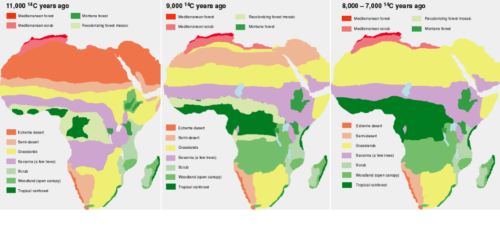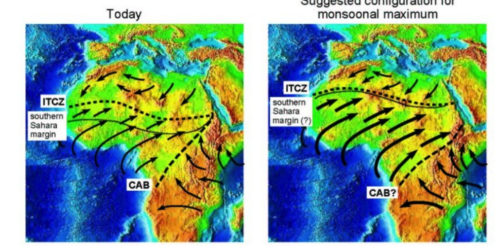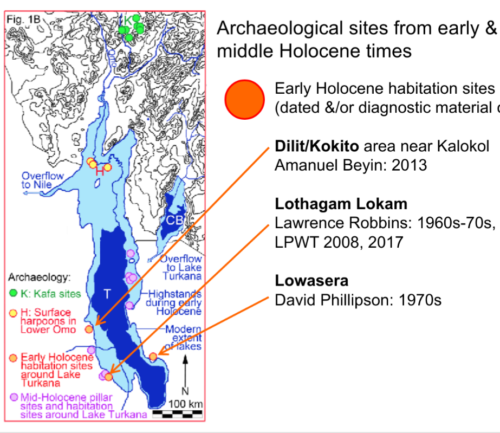This week, Dr. Lisa Hildebrand introduced students to Holocene cultural practices across Africa and in the Turkana Basin. This is Dr. Hildebrand’s primary area of research, and she shared her perspectives on ancient human activities in the region and the climatic changes that influenced them. The Holocene time period spans from about 11,700 years ago to present, and is sometimes referred to as the Anthropocene.

Africa at the beginning of the Holocene.
A critical phase in this time period is known as the African Humid Period (AHP), which started shortly before the Holocene and ended at about 5000 years ago. North Africa witnessed a verdant landscape in the “green Sahara,” as it was then a region of large lakes, and flora and fauna available for human exploitation. This is a period when human activities changed in relation to a changing environment. Understanding the development of human settlements and cultures along the Nile River provide data on the overall shift of fisher-hunter-gatherers to sedentary lifestyles, as they moved from the Nile Valley. Wavy-line pottery and dotted wavy-line pottery show up in many of the archaeological sites in the Sahara before it spread south to the Nile Valley, and to the Turkana Basin. Dr. Hildebrand pointed out the importance of understanding these technological patterns on a broader perspective, as it enables one to compare what is happening in Turkana to the rest of the Sahara.

Effects of the Inter-tropical Convergent Zone during the African Humid Period.

Early and Middle Holocene Archaeological sites in Turkana Basin.
While learning about paleoclimates, students compared the different timings and magnitudes of these climatic changes to human adaptive responses, and the movement patterns of the early inhabitants of the Basin from the Nile Valley. As prehistoric people moved south from the Nile, they brought their cultural practices and traditions to the Turkana Basin. Today, Lake Turkana stands at a level much lower compared to the Early and Middle Holocene levels. We learn that adaptive human practices were based on lake levels, as these individuals mainly resided on the shoreline. During the Early Holocene, the water level in the lake was higher, as a result of increased sea-surface temperatures. The inhabitants of the region in this time period were likely riparian foragers, and engaged in fishing using barbed harpoon points made of bone. Some of the sites with these types of archaeological assemblages include Lowasera, Dilit/Kokito, and Lothagam Lokam. Students have been involved in exercises comparing various barbed bone points with a goal of understanding technological variations in the region.

Variation in barbed bone points from Kokito, Turkana Basin.





